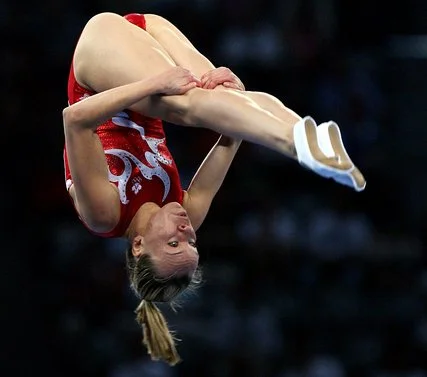A trampoline is a tough stretchy net that people can jump on.
Athletes perform gymnastics and acrobatics on the trampoline.
It is also an Olympic sport.
Trampolining is an Olympic event for men and women © Getty Images
Men and women compete on a trampoline 4.25 metres long and 2.14 metres wide which is made of thick nylon and 120 springs on an iron frame. The trampoline is about 1.5 metres high. (off the ground)
A large, thick mat, known as the safety platform, is on the floor at each end of the trampoline. It will cushion the impact if an athlete falls from the trampoline.
Somersaulting athlete. ©Getty Images
Men wear a sleeveless body suit and long gym trousers while women wear a tight body suit with sleeves that covers at least 2/3 of their arms. Athletes wear socks or special shoes designed for the trampoline.
The athletes jump, tumble and somersault on the trampoline. Each trampoline routine consists of 10 exercises.
Judges give each athlete points for their performance.
More points are given for difficult movements. ©iStock
In Olympic Trampoline, points are given for:
how high an athlete jumps
how long the athlete is in the air
how difficult are the movements that the athlete performs in the air.
History
The first modern trampoline was built by George Nissen and Larry Griswold around 1934 at the University of Iowa in the USA. It was designed as a training place for gymnasts, divers and freestyle skiers all of whom needed to practise their acrobatic skills.
Trampolining became an Olympic event at the Sydney Games in 2000.





